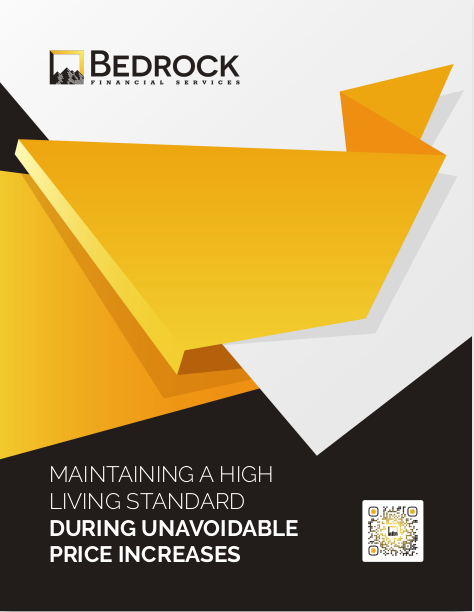Key Takeaways
-
Generic testimonials lack the specificity and emotional resonance needed to influence buying decisions in 2025.
-
Strategic testimonials—those that are story-driven, precise, and relevant—can significantly increase client trust and close rates.
Why Generic Testimonials Aren’t Helping Anymore
You’ve seen them. You’ve probably used them. Testimonials like “Great service!” or “Highly recommend!” might feel safe, but they aren’t doing you any favors. In today’s market, clients are more skeptical than ever. They need real proof, not vague praise.
In 2025, decision-making is highly influenced by personalized, story-rich content. When a testimonial sounds like it could apply to any agent, it instantly loses power. Clients tune it out, and the opportunity to create trust vanishes.
Here’s what’s changed:
-
Clients do more research and read reviews critically.
-
They expect social proof that reflects their specific concerns.
-
Short attention spans make generic blurbs ineffective.
To convert interest into commitment, your testimonials need to feel personal, relevant, and emotionally compelling.
What Makes a Testimonial Actually Work
A strong testimonial in 2025 does three things:
-
Builds credibility by referencing a clear outcome or benefit.
-
Creates relatability by speaking directly to the reader’s own challenges.
-
Leverages specificity so it doesn’t feel copy-pasted.
Think of your testimonials like micro case studies. Each one should answer these unspoken client questions:
-
Will this agent understand my situation?
-
Do they actually deliver results?
-
What did they help someone like me accomplish?
The goal is to move from being liked to being trusted.
The Framework for High-Impact Testimonials
Use this structure when requesting or curating testimonials:
1. The Challenge: What was the client facing before they found you?
-
“I was overwhelmed trying to figure out what coverage my family really needed.”
2. The Solution: How did you guide them or make things easier?
-
“Ali walked me through every step and broke it down in plain language.”
3. The Result: What changed because they worked with you?
-
“Now I feel confident in my plan and know my kids are protected.”
4. The Emotion: How do they feel now?
-
“I sleep better at night knowing we’re covered.”
This structure invites emotional storytelling, not just surface-level appreciation.
How to Collect Testimonials That Don’t Sound Scripted
To avoid generic responses, you need to ask the right questions. Don’t just say, “Can you leave me a review?”—guide the process.
Use prompts like:
-
“What was going on in your life when you decided to reach out?”
-
“What was most helpful or surprising about the experience?”
-
“What’s the biggest change you’ve noticed since working with me?”
These questions spark reflection. You’re helping clients tell their story—not just compliment you.
You can do this:
-
Over a quick phone call
-
Through a personalized email form
-
Via text message with a link to respond
Don’t worry about getting perfect wording. You can always polish it with the client’s permission while keeping their voice authentic.
Placement Matters: Where and How to Use Testimonials
A great testimonial loses power if it’s buried in a long page or stuck at the bottom of your website. In 2025, strategic placement makes a difference.
Place testimonials where they:
-
Reinforce claims right after you make them
-
Break up long chunks of text on your landing pages
-
Appear next to call-to-action buttons (quote requests, bookings)
And remember: match testimonials to the context. If you’re talking about retirement plans, use a testimonial from someone who came to you for retirement guidance.
Diversify formats too:
-
Use written quotes with photos (if permitted)
-
Add short video clips for high engagement
-
Turn stories into brief graphics for social media
Each format helps you reach a different type of decision-maker.
Quality Beats Quantity—Always
Don’t chase volume. A single, specific, emotional testimonial will outperform five generic ones.
Instead of aiming for a wall of praise, curate a few that speak to different client concerns:
-
Planning for retirement
-
Saving on monthly costs
-
Providing for family needs
-
Getting coverage after a health scare
Every testimonial should do a job. If it doesn’t add clarity or confidence, it doesn’t belong.
Keep Them Fresh and Relevant
Testimonials can go stale. If your most recent one is from 2021, it shows.
Set a routine for updating your testimonials every 6 months. In 2025, buyers want to see that you’re actively helping people like them.
Keep a rotating bank of stories:
-
Retire outdated ones
-
Reuse evergreen ones in new formats
-
Add timestamps when appropriate to show recency
This not only builds credibility but shows that your services stay relevant over time.
Overcoming the Awkwardness of Asking
If asking for testimonials still feels awkward, here’s a simple reframe:
You’re not asking for praise—you’re giving clients a chance to reflect and celebrate their decision. You helped them. Let them share that.
Try this timeline:
-
Day 1 after enrollment: Send a thank-you email.
-
Day 15: Follow up with a check-in.
-
Day 30: Ask how things are going, and introduce the idea of sharing their experience.
-
Day 45: Send a testimonial request with guided prompts.
Spacing it out respects their time and builds the relationship first.
Ethics Matter: Authenticity Is Everything
In 2025, clients spot fake testimonials from a mile away. You must:
-
Get written permission before publishing anything
-
Never invent or overly edit responses
-
Avoid stock photos or overly polished visuals
Authenticity isn’t just about legality—it’s your reputation.
Make sure your testimonials reflect real, lived experiences. When they do, they become one of your most powerful sales tools.
Let Your Clients Speak for You
If you want to close more sales, grow your reputation, and attract your ideal client, you need more than kind words. You need clarity. You need emotion. You need stories.
That’s what real testimonials do—they let future clients see themselves in the people you’ve already helped. They validate the decision to choose you.
And when they’re done right, they do more than build trust. They create loyalty before the first call even happens.
Ready to Elevate Your Testimonial Strategy?
If you’re serious about improving your sales process and client retention, testimonials are not a checkbox—they’re a tool. At Bedrock Financial Services, we help independent agents like you stand out with authentic branding, marketing systems, and automation that includes testimonial collection strategies.
We’ll help you build trust at every stage of the client journey—so your next client already believes in you before they ever reach out.
Sign up with us today and let’s amplify what your best clients are already saying.







